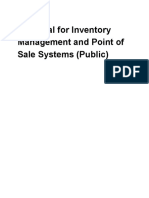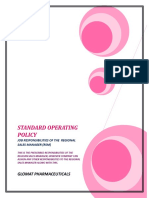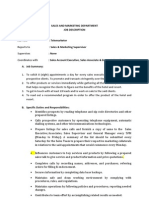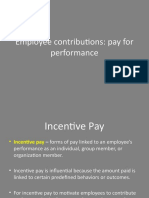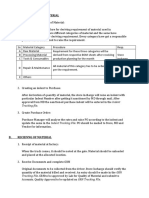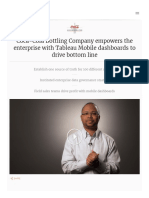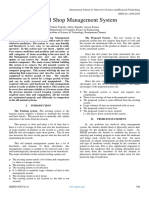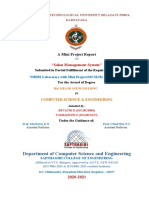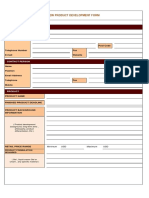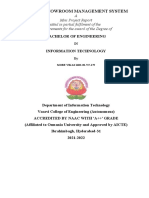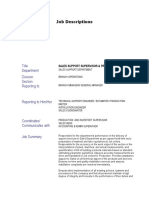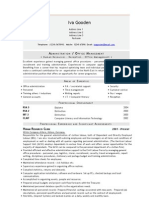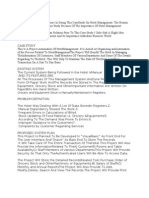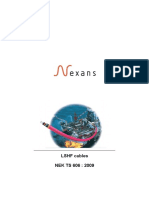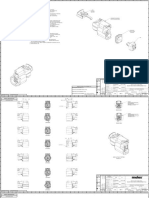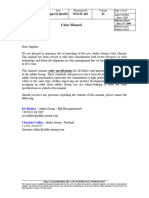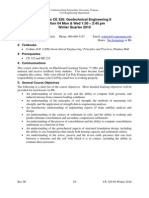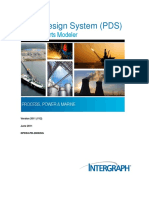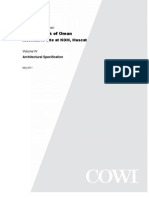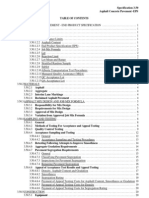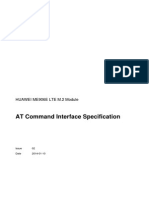`
TERM PAPER
On
Daily Expense Calculator
CAP615T
(Submitted in the 3nd semester Of Master of Computer Applications)
Session: 2012-13
Submitted By:-
Registration Number: 11105795
Roll Number: D1R02
Name: Manish Kumar Singh
Submitted To:
Kumar Vishal
Date of Submission: 17 Nov 2012
Daily expenses calculator
1
� ACKNOWLEDGEMENT
I take this opportunity to present my votes of thanks to all those guidepost
who really acted as lightening pillars to enlighten our way throughout this
project that has led to successful and satisfactory completion of this study.
We are really grateful to our HOD Mr. Balraj Kumar for providing us with
an opportunity to undertake this project in this university and providing us
with all the facilities. We are highly thankful to Mr.Kumar Vishal for his
active support, valuable time and advice, whole-hearted guidance, sincere
cooperation and pains-taking involvement during the study and in
completing the assignment of preparing the said project within the time
stipulated.
Lastly, We are thankful to all those, particularly the various friends , who
have been instrumental in creating proper, healthy and conductive
environment and including new and fresh innovative ideas for us during the
project, their help, it would have been extremely difficult for us to prepare
the project in a time bound framework.
Manish Singh
Daily expenses calculator
2
�Content table:
1. Introduction....................................................................05
2. System Analysis.............................................................06
3. Proposed System............................................................07
4. Feasibility Study.............................................................07
5-Description……………………………………………..08
6. System Requirements.....................................................09
7. Coding………………………………............................10
8. Output…………............................................................14
9.Testing............................................................................18
10. Future scope………………………………………..….18
11. Conclusion….................................................................18
12. Bibliography…..............................................................19
Daily expenses calculator
3
�Details of project:-Name of project --- Daily Expenses Calculator
Technology used:-
Back End: - my SQL
I used my SQL my project of following features:-
Cross – platform support
Triggers
Cursors
Update view
SSL support
Query caching
Store procedures
Front End:-
I used applet for my front end because it has reach rich controls which enables
me to take my front and effective and yet very attractive.
Language --- JAVA
I use java because it is a pure object oriented language and its key features
are:-
Compiled and interpreted
Object oriented
High performance
Dynamic and extensible
Plate from independent
No of modules:-
Ideas
Products
Market plans
Daily expenses calculator
4
� Customers
Competitors
Criteria
Checkpoint
Project
Use cases
Estimation duration: -60 days
1. INTRODUCTION:
Summary
Managing finances is an important part of the overall well-being of
individuals. In cases where a small business is owned, it is often cost
prohibitive to purchase a large scale application to use for managing the day to
day expenses of the business.
The disadvantages of purchasing these large scale record management
applications include:
High cost
Hardware requirement/maintenance
Training on the new/complex software
Expense Calculator seeks to provide a small scale expense management
application that can be used to manage expenses for individuals and small
business. The above disadvantages are eliminated by the small size and
specific focus of the application on expense management.
Purpose of this document
The purpose of this specification document is to formalize project
requirements for Expense Calculator by documenting and agreeing to the
requirements between the business users of the system and the company
developing the solution. It communicates the requirements for further system
analysis and construction activities.
Daily expenses calculator
5
�Intended Audience
The primary audiences of this document are
• Systems analysts and architects who will design and construct the system
• Testing team
Scope of the document
The scope this requirement specification is limited to explaining the
requirements necessary for architecting and developing calculator solution as
defined in the Statement of Work
2-System Analysis
System Analysis is a detailed study of
the various operations performed by a system and their relationships within
and outside of the system. Here the key question is- what all problems exist in
the present system? What must be done to solve the problem? Analysis begins
when a user or manager begins a study of the program using existing system.
During analysis, data collected on the various files, decision points and
transactions handled by the present system. The commonly used tools in the
system are Data Flow Diagram, interviews, etc. Training, experience and
common sense are required for collection of relevant information needed to
develop the system. The success of the system depends largely on how clearly
the problem is defined, thoroughly investigated and properly carried out
through the choice of solution. A good analysis model should provide not only
the mechanisms of problem understanding but also the frame work of the
solution Thus it should be studied thoroughly by collecting data about the
system. Then the proposed system should be analyzed thoroughly in
accordance with the needs. System analysis can be categorized into four parts.
System planning and initial investigation
Information Gathering
Applying analysis tools for structured analysis.
Daily expenses calculator
6
� Feasibilty study
3. PROPOSED SYSTEM:
Proposed system is an automated Daily Expense Calculator.
Through my software user can update expense details, calculate total expense
money, get details of account, update information, and edit information in
quick time. Our proposed system has the following advantages.
User friendly interface
Fast access to database as I am using files here for database.
Less error
More Storage Capacity
Search facility.
Quick transaction
All the manual difficulties in managing the Daily Expense information’s have
been rectified by implementing computerization.
4. FEASIBILITY ANALYSIS:
Whatever we think need not be feasible .It is wise to think about
the feasibility of any problem we undertake. Feasibility is the study of impact,
Daily expenses calculator
7
�which happens in the organization by the development of a system. The impact
can be either positive or negative. When the positives nominate the negatives,
then the system is considered feasible. Here the feasibility study can be
performed in two ways such as technical feasibility and Economical
Feasibility. Technical Feasibility:We can strongly says that it is technically
feasible, since there will not be much difficulty in getting required resources
for the development and maintaining the system as well. All the resources
needed for the development of the software as well as the maintenance of the
same is available in the organization here we are utilizing the resources which
are available already. Economical Feasibility Development of this application
is highly economically feasible .The organization needed not spend much more
for the development of the system already available. The only thing is to be
done is making an environment for the development with an effective
supervision. If we are doing so, we can attain the maximum usability of the
corresponding resources .Even after the development, the organization will not
be in a condition to invest more into the organization .Therefore, the system is
economically feasible.
5-DESCRIPTION
This use case describes the process to track expenses in the Expense calculator
application. The application is designed to allow users track expenses by
category and also manage different sets of expenses under different groups
known as accounts. The application will support the following functions
Architecture
Exp Calc should follow the 2-tier client-server architecture. In this form the
client comprises of both presentation and business logic and is thus referred to
as a "thick" client. The server will constitute of the data layer. For version 1.0
the client/server will be collocated in the same machine with the use of a file
based database. However, design considerations should be made for future
versions that will use a distributed database on a remote server.
Product Features
Daily expenses calculator
8
�Provide a mechanism to manage records of expenses including essential details
of the expense such as data and category Provide a mechanism to separate
expenses that belong to different accounts e.g. Work, Personal, and Joint etc
Provide a mechanism that ensures a summary of expenses collated by category
belonging to a specific account. Provide a mechanism to provide details about
the application.
6. System requirement:
Software Requirements:
Operating System : Windows
XP/2003/vista/7
Programming Language : Java
Compiler : Javac
Hardware Requirements:
Processor : Pentium 3 and above.
Hard Disk : 40GB
RAM : 256MB
Daily expenses calculator
9
�7. CODING:
Calc.java
import java.awt.*;
import java.awt.event.*;
import java.applet.*;
public class Calc extends Applet
{
public static void main(String [] args)
{
dialogframe f = new dialogframe("W E L C O M E T O D A I L Y U
S E S C A L C U L A T O R");
f.setSize(1000, 700);
f.addWindowListener(new WindowAdapter()
{
public void windowClosing(WindowEvent e) {System.exit(0);}});
f.setVisible(true);
}
}
class dialogframe extends Frame implements ActionListener
{
Menu Menu1;
MenuBar Menubar1;
MenuItem menuitem1, menuitem2,menuitem3;
Label label;
FileDialog dialog, updia;
Daily expenses calculator
10
�Dialog dia;
frame window;
Font f;
dialogframe(String title)
{
super(title);
f=new Font("",Font.BOLD,14);
setFont(f);
label = new Label("* WELCOME TO DAILY USES CALCULATOR *");
setLayout(new FlowLayout());
add(label);
Menubar1 = new MenuBar();
Menu1 = new Menu("File");
menuitem1 = new MenuItem("Daily Calculator");
menuitem2 = new MenuItem("Total Amount");
menuitem3 = new MenuItem("Exit");
Menu1.add(menuitem1);
Menu1.add(menuitem2);
Menu1.add(menuitem3);
menuitem1.addActionListener(this);
menuitem2.addActionListener(this);
menuitem3.addActionListener(this);
Menubar1.add(Menu1);
setMenuBar(Menubar1);
window=new frame("Daily use calculator");
window.setSize(500,600);
}
public void paint(Graphics g)
{
g.setColor(Color.PINK);
g.fillRect(0,0,1200,1000);
g.setColor(Color.YELLOW);
g.fillRoundRect(250,10, 490, 100, 30, 40);
}
public void actionPerformed(ActionEvent event)
{
Daily expenses calculator
11
� if(event.getSource() == menuitem1)
{
window.setVisible(true);
}
if(event.getSource() == menuitem2)
{
//
}
if(event.getSource() == menuitem3)
{
//
}
}
}
Frame.java
import java.applet.Applet;
import java.awt.*;
import java.awt.event.*;
import java.awt.Graphics.*;
public class frame extends Frame implements ItemListener,ActionListener
{
Label l1,l2,l3,l4,l5,l6;
TextField t1,t2,t3,t4,t5,t6;
Button b1,b2;
Font f;
frame(String title)
{
super(title);
f=new Font("",Font.PLAIN,14);
setFont(f);
l1=new Label("Mobile Bill");
add(l1);
t1=new TextField(30);
add(t1);
l2=new Label("Transport Bill");
Daily expenses calculator
12
�add(l2);
t2=new TextField(30);
add(t2);
l3=new Label("Break Fast Bill");
add(l3);
t3=new TextField(30);
add(t3);
l4=new Label("Lunch Bill");
add(l4);
t4=new TextField(30);
add(t4);
l5=new Label("Other Bill");
add(l5);
t5=new TextField(30);
add(t5);
l6=new Label("Total Bill");
add(l6);
t6=new TextField(30);
add(t6);
b1=new Button("Calculate");
add(b1);
b2=new Button("Reset");
add(b2);
b1.addActionListener(this);
b2.addActionListener(this);
setLayout(new FlowLayout());
addWindowListener(new WindowAdapter(){public void
windowClosing(WindowEvent e)
{setVisible(false);}});
}
public void paint(Graphics g)
{
g.setColor(Color.MAGENTA);
g.fillRect(0,0,1200,1000);
Daily expenses calculator
13
�}
public void actionPerformed(ActionEvent e)
{
if(e.getSource()==b1)
{
float
rs=Float.parseFloat(t1.getText())+Float.parseFloat(t2.getText())+Float.parseFl
oat(t3.getText())
+Float.parseFloat(t4.getText())+Float.parseFloat(t5.getText());
t6.setText(String.valueOf(rs));
}
if(e.getSource()==b2)
{
t1.setText("");
t2.setText("");
t3.setText("");
t4.setText("");
t5.setText("");
t6.setText("");
}
}
public void itemStateChanged(ItemEvent en)
{
}
}
8. Snapshots
Screen 1:
Daily expenses calculator
14
�Screen 2:
Daily expenses calculator
15
�Screen 3:
Daily expenses calculator
16
�Daily expenses calculator
17
�9. Testing:
Testing here is conducted in bottom up approach as follows:
Module testing: Here testing is done at each module level. Each case has
been thoroughly tested to discover pitfalls.
System testing: Here testing is done after all the modules have been
integrated.
10. Future Scope
In future one change can be done by adding the fingerprints of the student of
which the record is entered. And one more major change which can be done in
this project is that to add the snaps of the student of which the record is
entered. We can also add or subtract details of the individual
10. Conclusion:
This project developed, incorporated all the activities involved in this daily
expense calculator. It provides all necessary information to the management as
well as the use with the use of this system; the user can simply sit in front of
the system and monitor all the information and payment activities without any
physical movement of the file. Management can service best in time system
provides quickly and valuable information. These modules have been
Daily expenses calculator
18
�integrated for effective use of the management for future forecasting and for
the current need.
11. Biblioography:
java.com - Java for end-users
Oracle's Developer Resources for Java Technology.
Java SE 7 API Avado’s
Oracle's Beginner's tutorial for Java SE Programming
A Brief History of the Green Project
Michael O'Connell: Java: The Inside Story, Sunward, July 1995.
Daily expenses calculator
19
